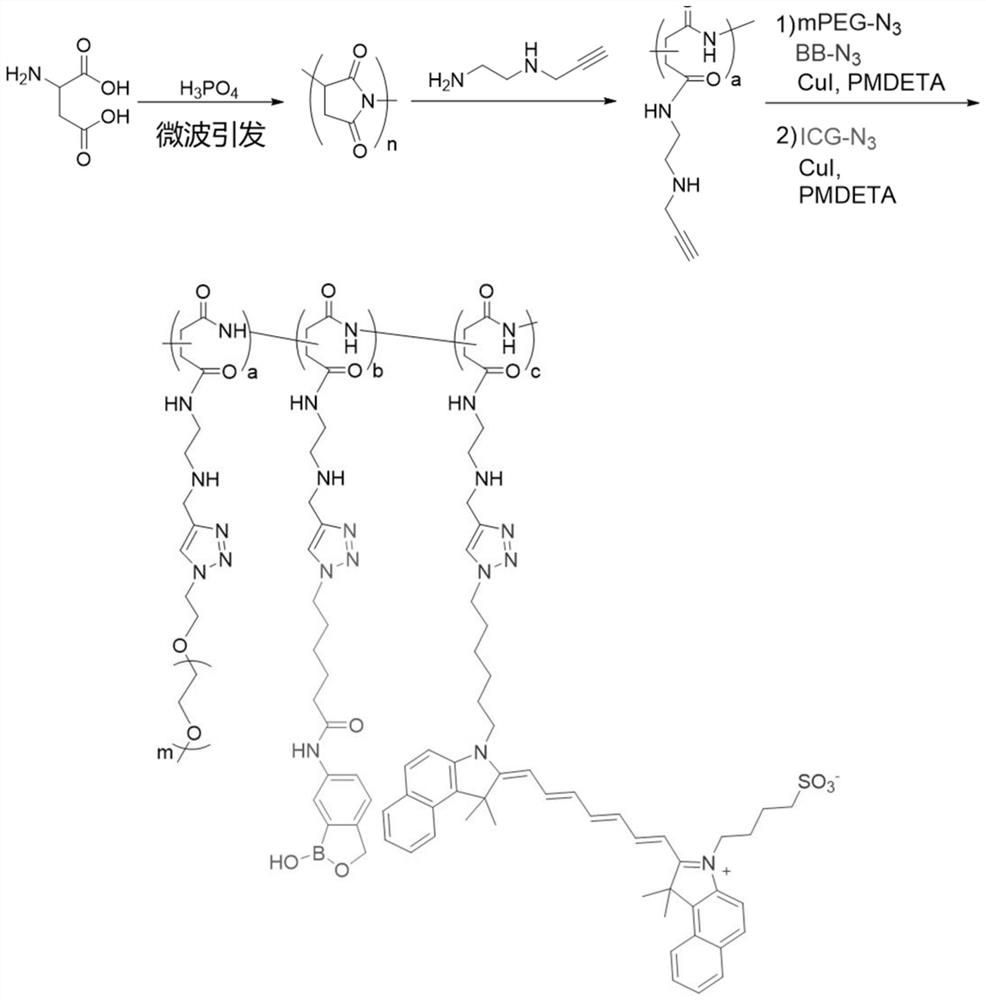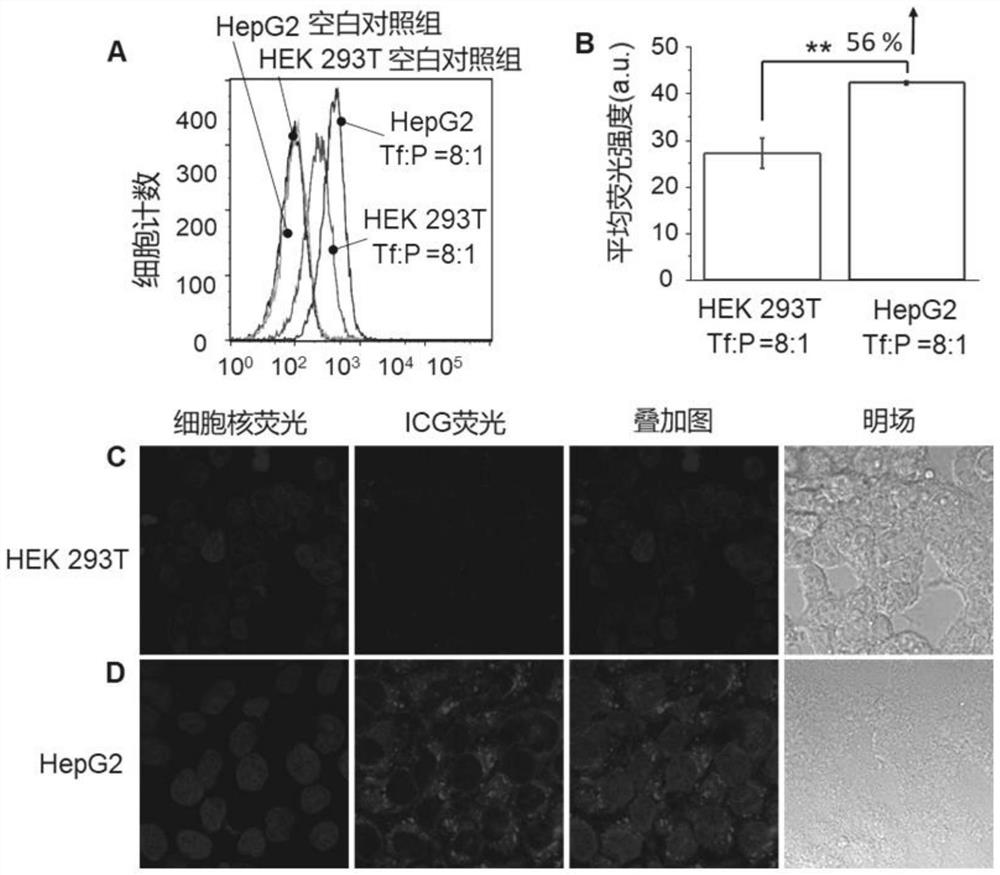A kind of antibody conjugate containing boron ester unit polymer and its construction method
A conjugate and conjugation technology, applied in the field of biomedicine, can solve the problems of reducing the therapeutic effect, failing to achieve the effect of targeted therapy, and the reduction of antibody-antigen binding rate, etc., to achieve clear and concise preparation process and excellent tumor targeting effect , Excellent biocompatibility effect
- Summary
- Abstract
- Description
- Claims
- Application Information
AI Technical Summary
Problems solved by technology
Method used
Image
Examples
Embodiment 1
[0023] Example 1: Preparation of polymethacrylic acid (PMAA) nanogel microspheres-transferrin (Tf) conjugate
[0024] Step 1: Preparation of PMAA Microspheres
[0025] Monomer methacrylic acid (MAA), crosslinking agent N,N-methylenebisacrylamide (MBA) and initiator azobisisobutyronitrile (AIBN) are added to acetonitrile in a certain proportion and mixed evenly, heated to 95°C, Reflux the solvent for 2 hours, centrifuge to remove the solvent and unreacted monomers, wash with ethanol and deionized water three times, and freeze-dry for 24 hours;
[0026] Step 2: Modification of 2-(hydroxymethyl)phenylboronic acid cyclic monoester unit on the surface of PMAA microspheres
[0027] A certain amount of PMAA nanogel microspheres is dispersed in phosphate buffer solution (pH=7.4, the same below), and 1-(3-dimethylaminopropyl)-3-ethylcarbodiimide hydrochloride (EDC ) and N-hydroxysuccinimide (NHS), reacted at room temperature for 1 hour to activate the carboxyl groups of the microsphe...
Embodiment 2
[0030] Example 2: Preparation of PMAA nanogel microspheres-vascular endothelial growth factor receptor antibody (Anti-VEGF Receptorantibody) conjugate
[0031] Disperse PMAA-BB microspheres (preparation method is the same as in Example 1) in phosphate buffer solution, add a certain amount of vascular endothelial growth factor receptor antibody phosphate buffer solution, mix well and let stand for 10 min until it fully reacts for subsequent applications.
Embodiment 3
[0032] Example 3: Preparation of polyaspartic acid drug-loaded micelles-Tf conjugates
[0033] Step 1: Preparation and Alkynylation of Polyaspartic Acid
[0034] L-aspartic acid powder, 85% phosphoric acid (H 3 PO 4 ), sulfolane and mesitylene were mixed evenly, after microwave reaction, washed with water and ethanol for several times, and the polysuccinimide obtained after vacuum drying and 2-[2-(2-propynyloxy)ethoxy ]Ethylamine was dissolved in dimethylformamide (DMF), reacted at room temperature for 12 hours, after several times of DMF dissolution-ether precipitation and centrifugation, and vacuum-dried to obtain alkyne-modified polyaspartic acid;
[0035] Step 2: Polyaspartic acid grafted with polyethylene glycol, cyclic monoester of 2-(hydroxymethyl)phenylboronic acid and drug molecule
[0036] Dissolve the alkyne-modified polyaspartic acid in DMF, add azide polyethylene glycol monomethyl ether (mPEG-N) dissolved in DMF 3 ) and azide 2-(hydroxymethyl)phenylboronic aci...
PUM
 Login to View More
Login to View More Abstract
Description
Claims
Application Information
 Login to View More
Login to View More - R&D Engineer
- R&D Manager
- IP Professional
- Industry Leading Data Capabilities
- Powerful AI technology
- Patent DNA Extraction
Browse by: Latest US Patents, China's latest patents, Technical Efficacy Thesaurus, Application Domain, Technology Topic, Popular Technical Reports.
© 2024 PatSnap. All rights reserved.Legal|Privacy policy|Modern Slavery Act Transparency Statement|Sitemap|About US| Contact US: help@patsnap.com










